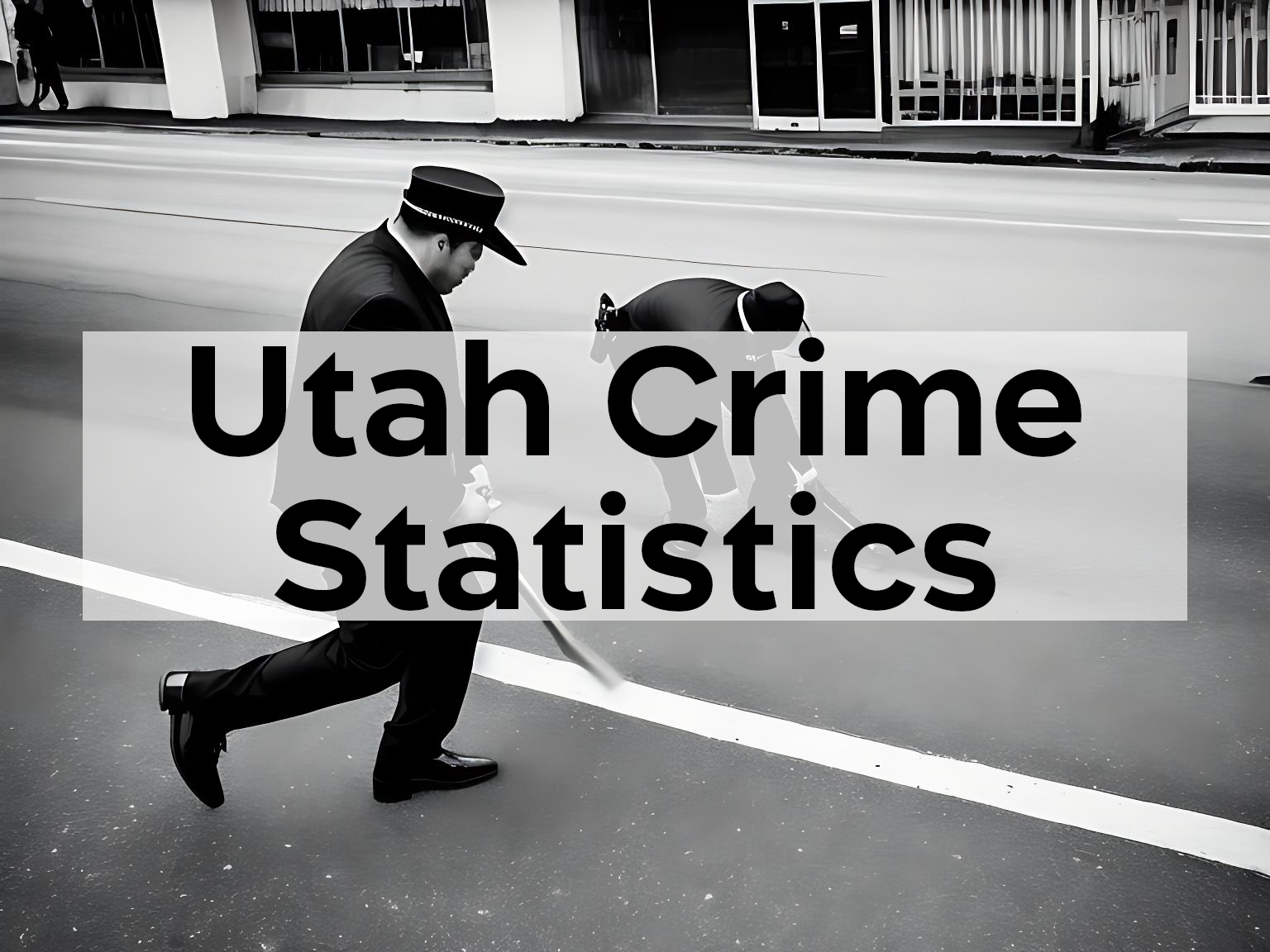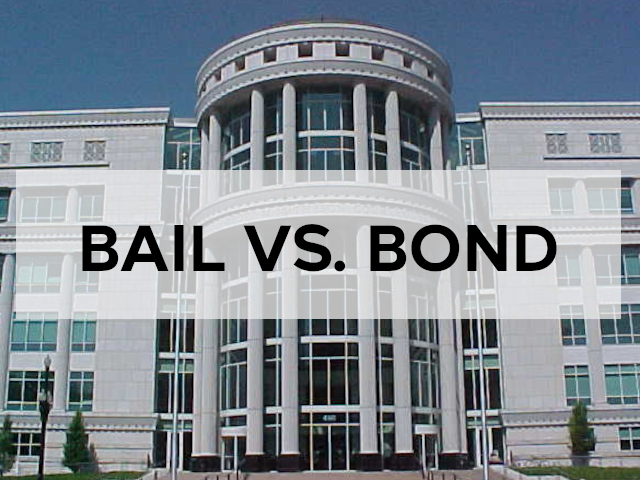DISCLAIMER: Altiorem Legal Services (hereinafter, “Altiorem”) cannot and does not provide legal advice. Altiorem is not a law firm; Altiorem’s staff are not attorneys, cannot act as attorneys, and do not act as attorneys; and any information provided by Altiorem in this article or otherwise is not a substitute for legal advice from an attorney. The information contained in this article should not be construed as legal advice, as it is not intended to be legal advice; the information in this article is provided for educational purposes only. Again, none of the information provided in this article should be construed as legal advice, and nobody should rely on or use the information contained in this article in their legal matters.
WHAT ARE CRIME STATISTICS?
“Crime statistics” in Utah refers to the data and information related to criminal activities in the state of Utah in the United States. These statistics are usually compiled and analyzed by local, state, and federal law enforcement agencies to help them understand the nature, frequency, and trends of various types of crimes in Utah.
This information is essential for developing crime prevention strategies, allocating resources, and formulating public policy.
Crime statistics typically include information on various types of offenses, such as violent crimes, which include, for example, murder, non-negligent manslaughter, rape, robbery, and aggravated assault; and property crimes, which include, for example, burglary, larceny-theft, motor vehicle theft, and arson.
These statistics can be further broken down by geographical location (statewide, county, city, or neighborhood), demographics (age, gender, race, etc.), and time (annual, monthly, or daily).
HOW ARE CRIME STATISTICS GATHERED?
Each state has its own database that collects information regarding criminal activity. In Utah, the Utah Department of Public Safety’s Bureau of Criminal Identification (hereinafter, the “BCI”) publishes a “Crime in Utah Report” every year.
This report is given to government leaders and citizens to help better understand criminal activity in Utah.1See Utah Department of Public Safety, Crime in Utah 2021, https://bci.utah.gov/utah-crime-statistics/crime-in-utah-2021/ (last visited Apr. 6, 2023) As technology has advanced, these statistics have become easier to track and more accurate.
In 2021 (the most recent year this data is available), 128 agencies in Utah submitted statistics for the BCI. These accounted for 94.48% of Utah’s population.2See id. The military installations, national parks, and tribal lands in Utah do not submit statistics to the BCI but instead submit them directly to the Federal Bureau of Investigations (hereinafter, the “FBI”).
One new aspect to consider is the role of data-sharing initiatives and the use of modern analytical tools in enhancing the understanding of crime patterns. By collaborating with other states and federal agencies, Utah’s BCI can potentially gain insights into regional and national crime trends, enabling more effective resource allocation and targeted crime prevention efforts.
Furthermore, as technology continues to evolve, it is likely that new methodologies and data sources will emerge, providing even greater precision and depth in the analysis of crime statistics. The integration of data from social media, surveillance systems, and other digital platforms can potentially offer additional perspectives on criminal behavior and help develop more effective strategies to address crime in Utah.
The FBI also tracks crime statistics in the United States as a whole. This is done through the Uniform Crime Reporting Program (hereinafter, the “UCRP”). The UCRP has been providing statistics since the year 1930.3See Federal Bureau of Investigation, Crime/Law Enforcement Stats (Uniform Crime Reporting Program), https://www.fbi.gov/how-we-can-help-you/more-fbi-services-and-information/ucr (last visited Apr. 6, 2023)
The UCRP is an initiative led by the FBI to collect, analyze, and publish crime data from law enforcement agencies across the United States. The UCRP serves as a vital source of nationwide crime statistics, enabling comparisons between different regions and the identification of crime trends over time.
The UCRP consists of several components, including the following:
- Summary Reporting System: The original data collection method for the UCRP, the Summary Reporting System, gathers monthly crime statistics from participating law enforcement agencies, focusing on specific crime categories known as “Part I offenses.” These include crimes such as murder, non-negligent manslaughter, rape, robbery, aggravated assault, burglary, larceny-theft, motor vehicle theft, and arson.
- National Incident-Based Reporting System: Introduced in the 1980s as a more comprehensive data collection method, the National Incident-Based Reporting System collects data on every single incident and arrest within 24 offense categories, covering 52 specific crimes known as “Group A offenses.” This system also gathers information on “Group B offenses,” which are less serious crimes that only require reporting of arrest data. The National Incident-Based Reporting System offers more detailed data than the Summary Reporting System, including information on victims, offenders, relationships, and other incident-specific details.
- Hate Crime Statistics: The UCRP collects data on hate crimes, which are offenses motivated by bias against a particular race, religion, disability, sexual orientation, ethnicity, gender, or gender identity. This data helps to better understand the nature and prevalence of hate crimes in the United States.
- Law Enforcement Officers Killed and Assaulted: This component of the UCRP collects data on the number of law enforcement officers killed or assaulted in the line of duty, providing valuable insights into the risks faced by officers and helping develop strategies to enhance officer safety.
The UCRP plays a critical role in shaping public policy, resource allocation, and crime prevention strategies at local, state, and federal levels. By providing a consistent and reliable source of nationwide crime data, the UCRP helps law enforcement agencies, policymakers, researchers, and the public to better understand crime trends and work towards creating safer communities.
A majority of the agencies that submit statistics to BCI are law enforcement agencies. However, public defender offices, some domestic violence shelters, and crime/victim witness programs also have the opportunity to submit statistics.
The foregoing is described in more detail as follows:
- Public defender offices: Public defenders represent individuals who are unable to afford a private attorney in criminal cases. They may submit statistics related to the number of cases they handle, case outcomes, and demographic information about the clients they serve. This data can help paint a more comprehensive picture of the criminal justice system and identify trends in the legal representation of accused individuals.
- Domestic violence shelters: These organizations provide temporary housing and support services for victims of domestic violence and their families. They may submit data on the number of clients served, the types of abuse experienced, and demographic information about the victims. This information can help identify patterns in domestic violence incidents and inform efforts to support and protect victims.
- Crime/victim witness programs: These programs assist victims and witnesses of crimes through various support services, including crisis intervention, counseling, and guidance through the criminal justice process. They may submit statistics on the number of victims and witnesses they assist, the types of crimes involved, and the demographic information of the individuals they serve. This data can offer insights into the experiences of crime victims and witnesses and inform efforts to improve support services and the overall functioning of the criminal justice system.
By collecting data from these various sources, the BCI can develop a more comprehensive understanding of crime and victimization in Utah. This broader perspective allows for the development of more effective crime prevention strategies, policies, and support services to address the diverse needs of communities across the state.
UTAH CRIME STATISTICS
Crime statistics are broken down into different categories and subcategories, including the following:
- Crimes Against Persons:
- Assault;
- Murder & Manslaughter;
- Human Trafficking;
- Kidnapping;
- Forcible Sexual Offenses; and
- Non-forcible Sexual Offenses.
- Crimes Against Property:
- Arson;
- Bribery;
- Burglary;
- Counterfeiting;
- Destruction/Damage/Vandalism of Property;
- Embezzlement;
- Extortion/Blackmail;
- False Pretenses;
- Credit Card Fraud;
- Impersonation;
- Welfare Fraud;
- Wire Fraud;
- Identity Theft;
- Hacking/Computer Invasion;
- Pocket-picking;
- Purse-snatching;
- Shoplifting;
- Theft from Building;
- Theft from Coin-Operated Machine or Device;
- Theft from Motor Vehicle;
- All Other Larceny;
- Motor Vehicle Theft; and
- Robbery.
- Crimes Against Society:
- Animal Cruelty;
- Drug/Narcotic Violations;
- Drug Equipment Violations;
- Betting/Wagering;
- Operating/Promoting/Assisting Gambling;
- Gambling Equipment Violations;
- Sports Tampering;
- Pornography/Obscene Material;
- Prostitution; and
- Weapon Law Violations.
2021 UTAH CRIME STATISTICS TOTALS4See Safety, supra.
Crimes Against Persons totaled 33,149 instances, divided into the following subcategories:
- Assault totaled 26,947 instances;
- Murder & Manslaughter totaled 85 instances;
- Human Trafficking totaled 54 instances;
- Kidnapping totaled 983 instances;
- Forcible Sexual Offenses totaled 4,899 instances; and
- Non-forcible Sexual Offenses totaled 181 instances.
Crimes Against Property totaled 114,341 instances, divided into the following subcategories:
- Arson totaled 260 instances;
- Bribery totaled 9 instances;
- Burglary totaled 7,403 instances;
- Counterfeiting totaled 1,968 instances;
- Destruction/Damage/Vandalism of Property totaled 24,917 instances;
- Embezzlement totaled 88 instances;
- Extortion/Blackmail totaled 345 instances;
- False Pretenses totaled 6,148 instances;
- Credit Card Fraud totaled 4,714 instances;
- Impersonation totaled 1,556 instances;
- Welfare Fraud totaled 8 instances;
- Wire Fraud totaled 817 instances;
- Identity Theft totaled 402 instances;
- Hacking/Computer Invasion totaled 36 instances;
- Pocket-picking totaled 95 instances;
- Purse-snatching totaled 265 instances;
- Shoplifting totaled 10,522 instances;
- Theft from Building totaled 3,288 instances;
- Theft from Coin-Operated Machines or Devices totaled 42 instances;
- Theft from Motor Vehicle totaled 16,641 instances;
- Theft of Motor Vehicle Parts or Accessories totaled 4,787 instances;
- All Other Larceny totaled 18,597 instances;
- Motor Vehicle Theft totaled 8,312 instances; and
- Robbery totaled 1,093 instances.
Crimes Against Society totaled 46,269 instances, divided into the following subcategories:
- Animal Cruelty totaled 115 instances;
- Drug/Narcotic Violations totaled 21,361 instances;
- Drug Equipment Violations totaled 20,075 instances;
- Betting/Wagering totaled 0 instances;
- Operating/Promoting/Assisting Gambling totaled 0 instances;
- Gambling Equipment Violations totaled 0 instances;
- Sports Tampering totaled 0 instances;
- Pornography/Obscene Material totaled 576 instances;
- Prostitution totaled 138 instances; and
- Weapon Law Violations totaled 4,004 instances.
HOW DOES UTAH COMPARE TO OTHER STATES?
While some of these numbers might seem staggering, Utah has very low crime statistics.
According to population figures used to calculate population-adjusted crime rates, Utah ranks 41st in the nation for the lowest violent crime, tied only with Wyoming.5See FBI Uniform Crime Reporting Program, Federal Bureau of Investigation Crime Data Explorer, https://cde.ucr.cjis.gov/LATEST/webapp/#/pages/home (last visited Apr. 6, 2023)
Utah remains a very safe place to live, and these statistics are just one way that Utah and the Federal Government can address situations where crime may be occurring at higher rates.
Utah’s relatively low crime statistics compared to other states in the country can be attributed to various factors, including its demographics, social and economic conditions, and law enforcement efforts. Here are some aspects that help explain Utah’s crime rates:
- Demographics: Utah has a relatively young population, with a high percentage of families and a low percentage of single adults. Research has shown that areas with more stable family structures tend to have lower crime rates. Additionally, Utah’s population is generally homogeneous, which may contribute to increased social cohesion and lower crime rates.
- Socioeconomic factors: Utah has a relatively low poverty rate and a strong economy, which can positively impact crime rates. Research has consistently shown that areas with higher levels of poverty and unemployment tend to have higher crime rates.
- Community engagement: Utah is known for its strong sense of community and high levels of civic participation. This community engagement may contribute to increased social cohesion and informal social control, which can deter criminal activity.
- Law enforcement and criminal justice system: Utah’s law enforcement agencies and the criminal justice system generally work diligently to prevent and respond to crime. Through community policing, data-driven strategies, and effective resource allocation, Utah is able to maintain lower crime rates compared to other states.
- Geography: Utah’s geography, with its vast rural areas and significant natural barriers, may also play a role in its lower crime rates. Urban areas tend to have higher crime rates due to factors like population density, socioeconomic conditions, and the availability of potential targets.
While Utah enjoys a relatively low crime rate when compared to other states, it is essential for the state and federal government to continually monitor crime trends and work to address areas where crime rates may be higher.
By focusing on proactive prevention strategies, community engagement, and targeted law enforcement efforts, Utah can continue to maintain its reputation as a relatively safe place to live.
CONTACT US TODAY!
Do you need help with crime statistics? Let Altiorem help you today with affordable, top-quality legal services.
Expertise. We are knowledgeable, skilled, and experienced in analyzing crime statistics and in drafting all manner of legal documents, such as briefs, pleadings, motions, memoranda, letters, contracts, etc. If you need a top-quality, professional, excellently written, well-researched, and compelling legal document drafted, then look no further!
Quality. We produce top-quality, properly written legal documents with impeccable grammar, punctuation, spelling, structure, flow, information, compelling legal arguments, and persuasive legal conclusions. You can see the quality of our work on our work samples page, where you can peruse and evaluate our writing, as well as our other blog posts.
Experience. Our paralegals are highly experienced in working with attorneys, other paralegals, and court personnel.
Customer Care. Navigating the Utah legal system can be daunting and confusing. Let Altiorem relieve your stress and be your guide. Altiorem has a team of professional paralegals ready to work for you. We want to give you the best chance at getting an outcome for your case that you will be happy with. We are happy to receive documents via email from you, speak with you on the phone, look through court files, or even translate documents (English / Spanish)!
Accessible. If you are interested in retaining our services, we can be contacted at (801) 855-6541 (text or call) and at altiorem@altioremlegalservices.com. If you have a project in mind that you would like us to work on, please click here to send us a project request and get a quote. Alternatively, you can send us an email detailing the work you need to be performed, and a real person will respond promptly.
Thank you for your attention and consideration.



